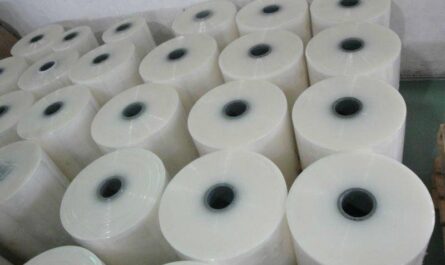Traditional foams made from petroleum-based polymers like polystyrene break down very slowly, polluting our land and waterways. However, a new generation of biodegradable foams is emerging that could help solve this problem. This article explores the development of biodegradable foam and its potential to revolutionize industries that rely heavily on conventional foam materials.
What is Biodegradable Foam?
Biodegradable foam refers to lightweight cushioning or insulating materials that are capable of fully decomposing into natural elements like carbon dioxide, methane, water, inorganic compounds and biomass within a reasonable period when exposed to biological agents like bacteria and fungi in conditions present in compost, soil or marine environments. Traditional petroleum-based foams take hundreds of years to degrade but biodegradable foams can break down in a matter of months.
The foams are produced using renewable, plant-based polymers and additives that make the final product compostable. Common bio-polymers used include polylactic acid (PLA), starch, cellulose, and polyhydroxyalkanoates (PHAs). Some foams also contain protein-rich byproducts from food and agriculture industries to enhance biodegradability. Their cellular structure and pore distribution are engineered to be similar to standard foams for equivalent performance characteristics.
Potential Applications of Biodegradable Foam
Biodegradable foams have a variety of applications across many industries due to their comparable insulating and cushioning properties to regular foams. Some key areas where they are poised to make a big impact include:
Packaging Industry
Packaging is one of the largest applications of petroleum-based foams like EPS and XPS which are non-recyclable and cause massive litter. Biodegradable foam packaging for food, electronics, appliances etc. can help reduce plastic pollution worldwide. Large companies are actively investing in greener foam technologies for containers, cushions, wrapping etc.
Automotive Industry
Vehicle interior components like seating, headrests, armrests etc. traditionally use petroleum-based foams which are difficult to dispose-off at end-of-life. Switching to biodegradable foam variants can lower environmental impact of automotive manufacturing. Some auto makers have already adopted sustainable foam prototypes.
Construction Industry
Biodegradable Foam are a promising renewable alternative to petroleum-based insulation foams in buildings which currently end up in landfills after demolition. Their deployment offers sustainability along with energy efficiency advantages through good insulation properties.
Other Adaptive Areas
Biodegradable foam also shows potential in diverse applications like furniture, mattresses, carpet underlay, geo-textiles, floats, sports equipment, medical devices and more industries attempting to go green. Continuous research will likely expand scope of these eco-friendly materials.
Challenges in Production and Adoption
While the promise of biodegradable foams is immense, commercial viability and widespread adoption still faces barriers:
Higher Production Costs
Sourcing sustainable raw materials and developing specialized production processes make biodegradable foams more expensive than ordinary foams presently. Mass production could help lower costs over time as technologies mature.
Performance Deviations
Not all plant-based polymers offer characteristics identical to petrochemicals. Variations in properties like strength, life expectancy and processing may limit direct replacements in some existing applications. More R&D on materials is required.
Insufficient Infrastructure
Current recycling frameworks are optimized for traditional plastics, not compostable materials. Lack of industrial composting centers and public awareness on proper disposal also hinder large-scale adoption of biodegradable alternatives.
Legislative Pushbacks
Regulations around labeling, procurement policies and extended producer responsibility need revisions to recognize compostable foams and ensure responsible waste management. Absence of policy drivers has slowed commercial commitment.
While commercialization hurdles remain, biodegradable foams show enormous potential to transform industries reliant on non-renewable petroleum-based varieties. As production capabilities scale up, costs come down and more sustainable infrastructure develops, the environmentally-friendly foams are positioned for widespread uptake. Major brands moving in this direction will also motivate collaboration across the value chain to accelerate adoption of these eco-friendlier alternatives benefiting both businesses and planet. With focused R&D support and policy incentives, biodegradable foams could play a defining role in the transition to a circular economy.
Note:
1. Source: Coherent Market Insights, Public sources, Desk research
2. We have leveraged AI tools to mine information and compile it




